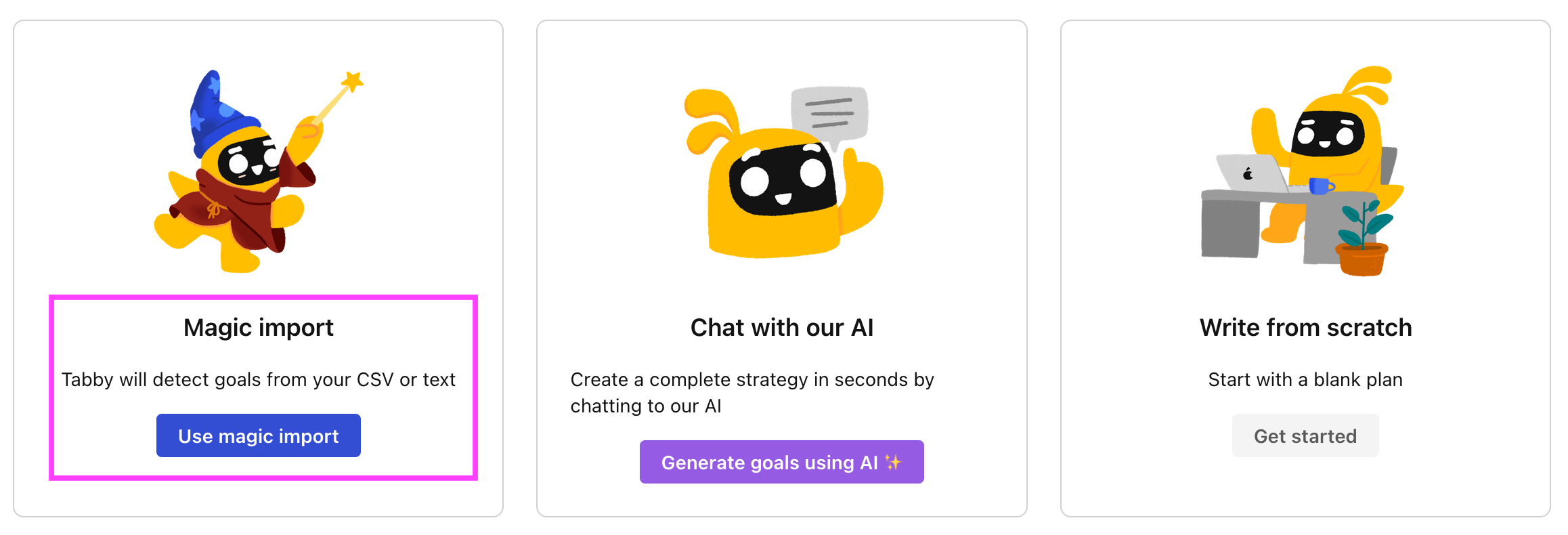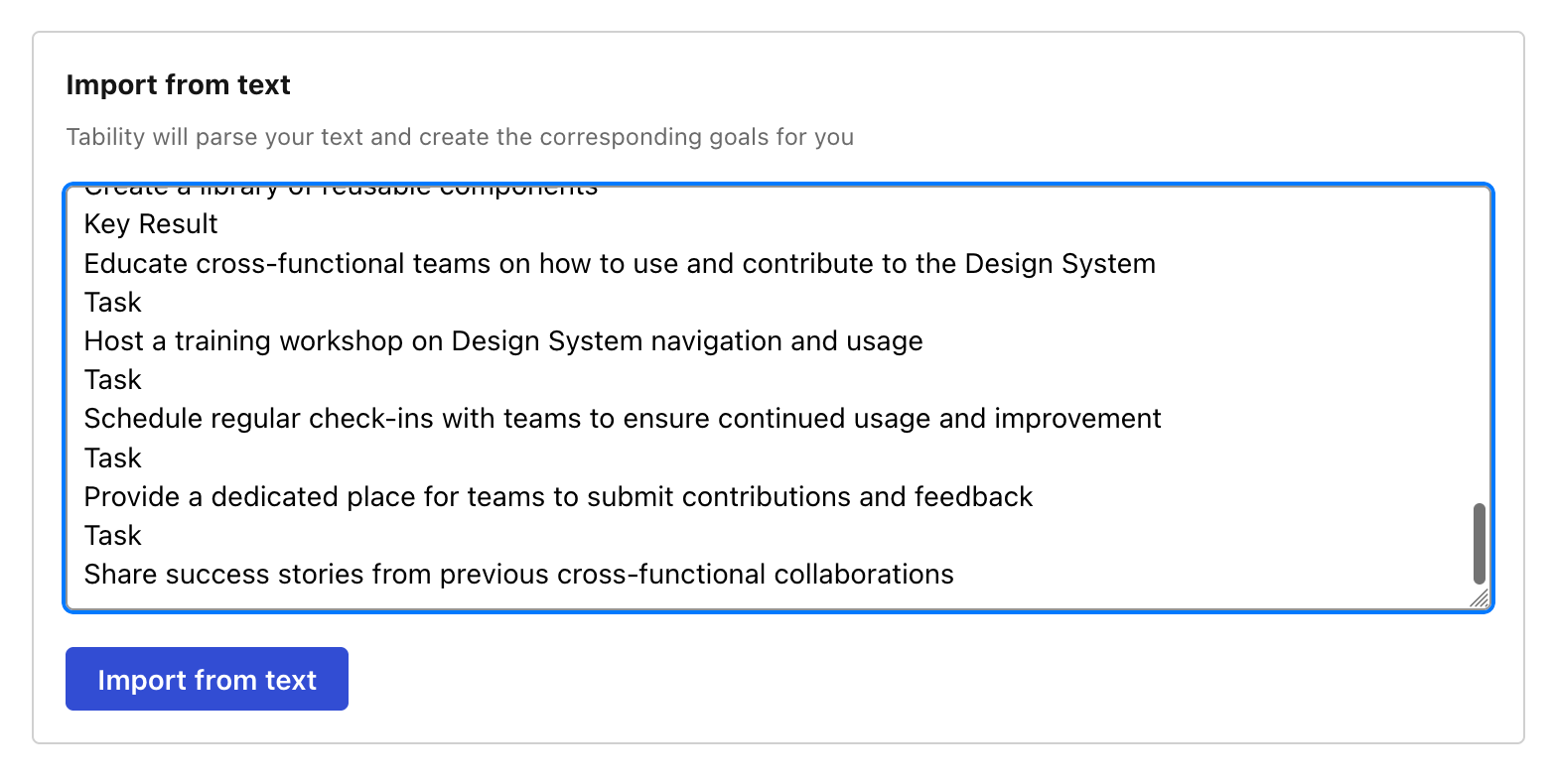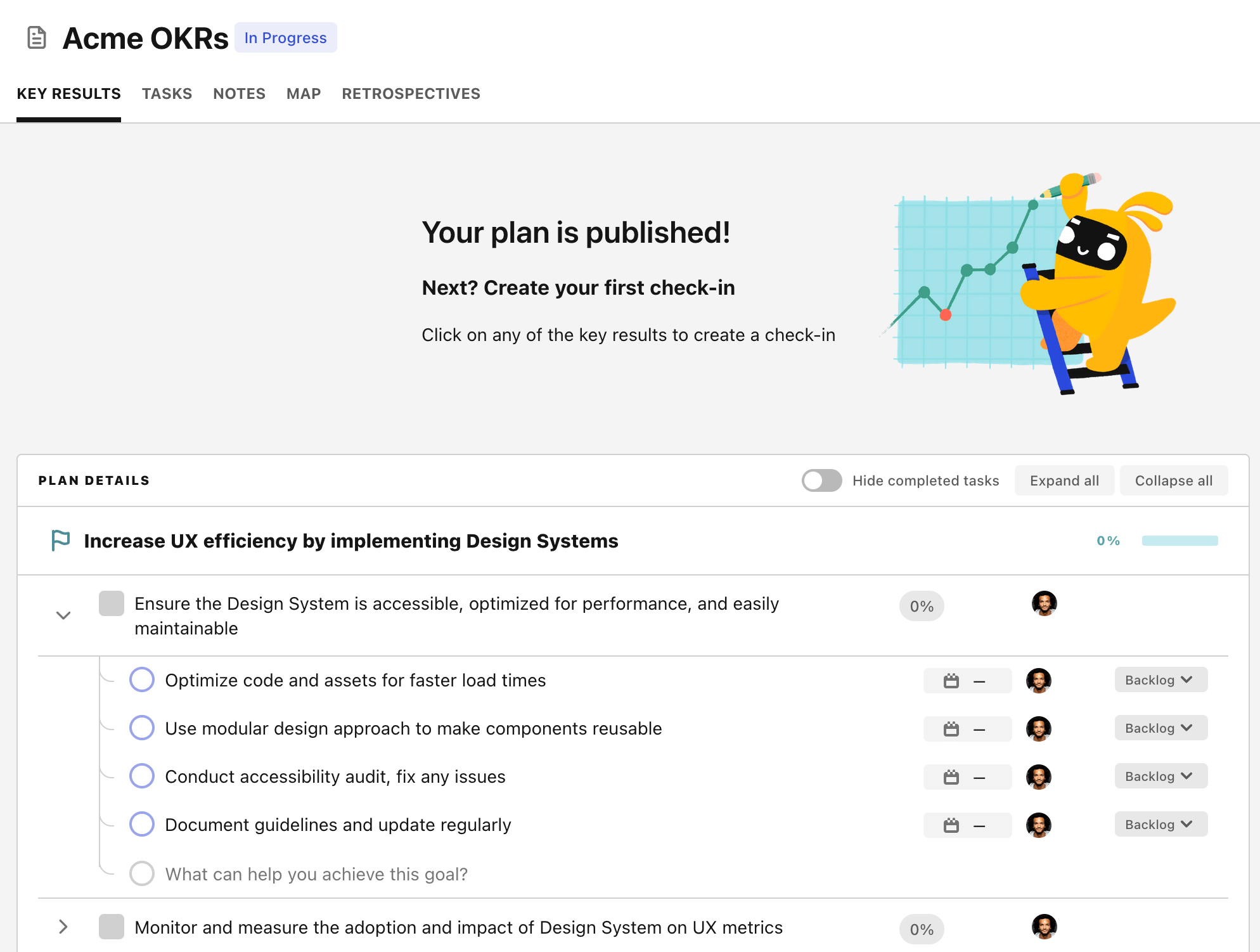OKR template to deploy central device management system efficiently
Your OKR template
The second outcome of this OKR specifies the crafting of a stable system design before the end of week six. It involves identifying the necessary system components, creating an initial blueprint for the desired system structure, and starting a system appraisal and revision process.
Moreover, this OKR also anticipates training 75% of the IT team to use and troubleshoot the new system by the end of week twelve. This is accomplished by arranging and conducting training sessions, identifying those in the IT team who need training, and creating a specific system usage and troubleshooting curriculum.
Overall, this OKR is a comprehensive plan for an effective deployment of a central device management system. It emphasizes on aspects ranging from development spring-cleaning to the assimilation of the new system within the organization's IT infrastructure.
ObjectiveDeploy central device management system efficiently
KRComplete system development with zero critical bugs by week ten
Implement regular, rigorous bug-testing procedures
Prioritize fixing all critical bugs promptly
Outline a detailed system development plan
KRArchitect a robust system design by the end of week six
Identify necessary components for the system design
Develop preliminary blueprint for selected system architecture
Initiate system evaluation and revision process
KRTrain 75% of IT team on the system usage and troubleshooting by week twelve
Schedule and execute training sessions by week twelve
Identify members of IT team requiring system training
Develop detailed system usage and troubleshooting curriculum
How to edit and track OKRs with Tability
You'll probably want to edit the examples in this post, and Tability is the perfect tool for it.
Tability is an AI-powered platform that helps teams set better goals, monitor execution, and get help to achieve their objectives faster.
With Tability you can:
- Use AI to draft a complete set of OKRs in seconds
- Connect your OKRs and team goals to your project
- Automate reporting with integrations and built-in dashboard
Instead of having to copy the content of the OKR examples in a doc or spreadsheet, you can use Tability’s magic importer to start using any of the examples in this page.
The import process can be done in seconds, allowing you to edit OKRs directly in a platform that knows how to manage and track goals.
Step 1. Sign up for a free Tability account
Go tohttps://tability.app/signup and create your account (it's free!)
Step 2. Create a plan
Follow the steps after your onboarding to create your first plan, you should get to a page that looks like the picture below.

Step 3. Use the magic importer
Click on Use magic import to open up the Magic Import modal.
Now, go back to the OKR examples, and click on Copy on the example that you’d like to use.

Paste the content in the text import section. Don’t worry about the formatting, Tability’s AI will be able to parse it!

Now, just click on Import from text and let the magic happen.

Once your example is in the plan editor, you will be able to:
- Edit the objectives, key results, and tasks
- Click on the target 0 → 100% to set better target
- Use the tips and the AI to refine your goals
Step 4. Publish your plan
Once you’re done editing, you can publish your plan to switch to the goal-tracking mode.

From there you will have access to all the features that will help you and your team save hours with OKR reporting.
- 10+ built-in dashboards to visualise progress on your goals
- Weekly reminders, data connectors, and smart notifications
- 9 views to map OKRs to strategic projects
- Strategy map to align teams at scale